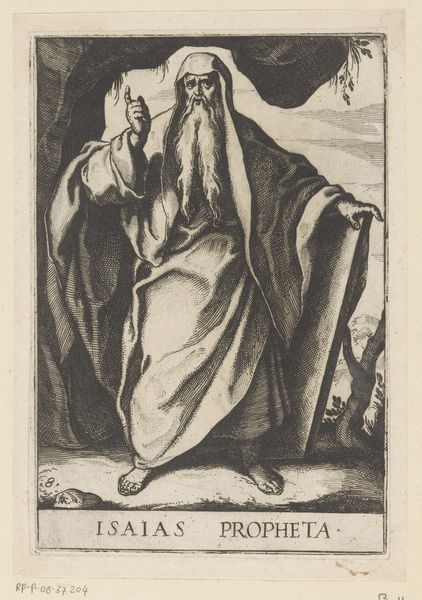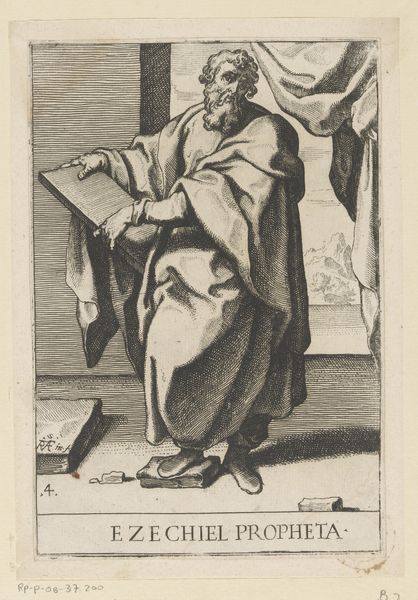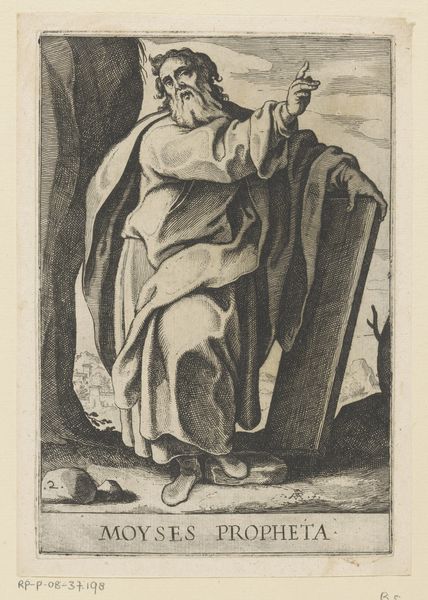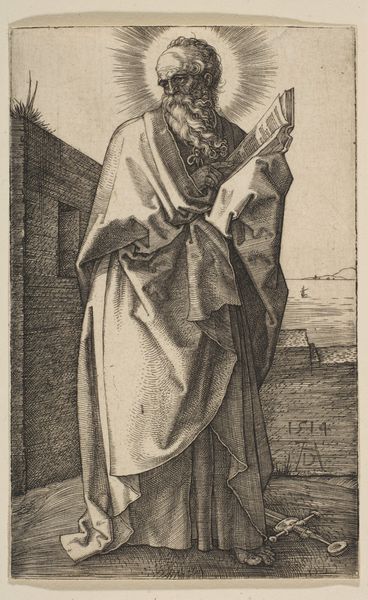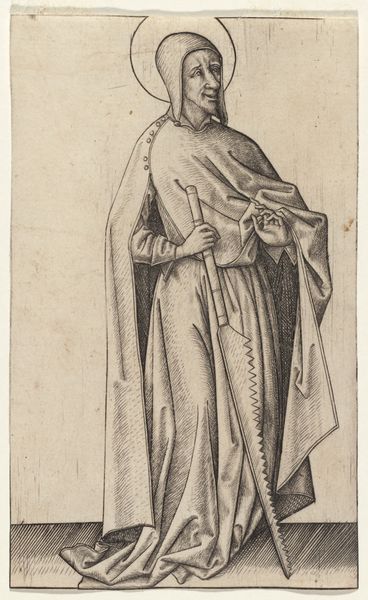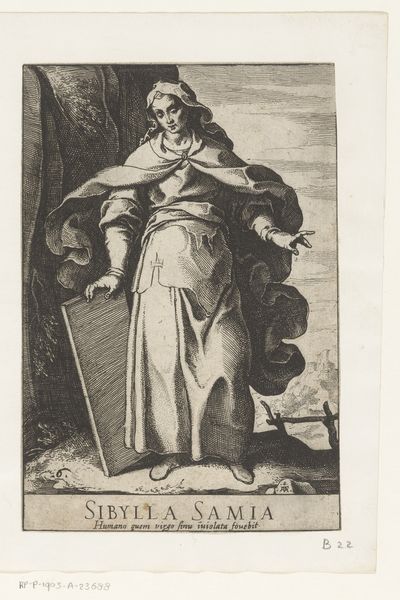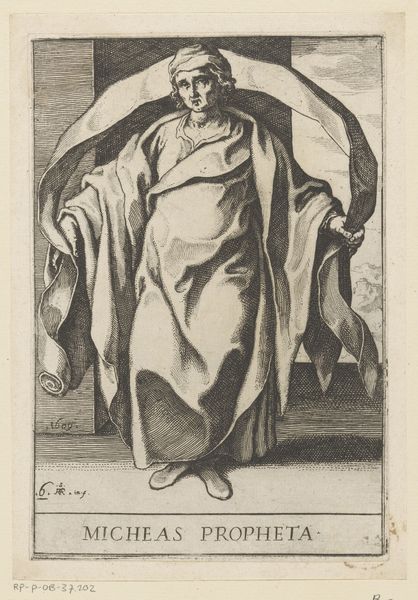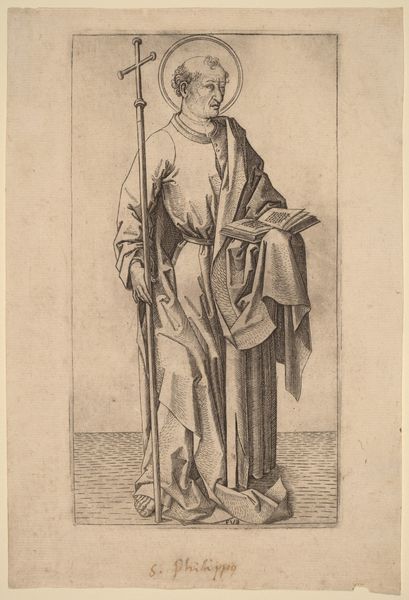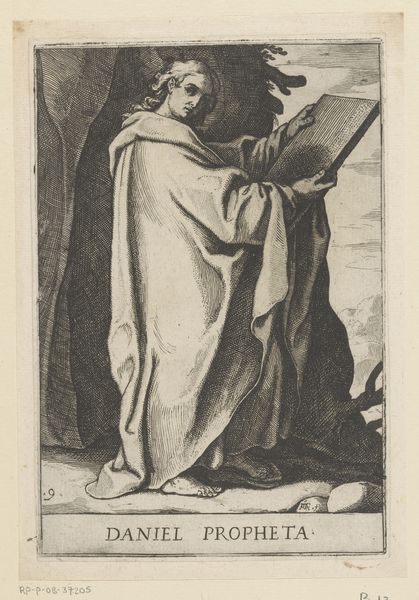
print, engraving
#
portrait
#
aged paper
# print
#
old engraving style
#
mannerism
#
history-painting
#
engraving
Dimensions: height 190 mm, width 129 mm
Copyright: Rijks Museum: Open Domain
Raffaello Schiaminossi created this print, entitled "Perzische Sibille," sometime between the late 16th and early 17th centuries. It was made using the intaglio technique, where the image is incised into a metal plate, likely copper. Look closely, and you'll see the network of fine lines that define the form. The artist would have painstakingly etched these into the plate with a tool called a burin. Ink is then applied to the plate, pushed into these lines, and the surface wiped clean. Finally, the plate is pressed onto paper, transferring the image. This process demanded immense skill and patience. Each line contributes to the overall effect, creating a sense of depth and texture. Consider the time and labor involved in producing just one print, and then imagine the multiples that would have been created. The printing press made art more accessible, yet the hand of the artist remained crucial to the process. Understanding these methods helps us appreciate the material reality and social context of art production in the early modern period.
Comments
No comments
Be the first to comment and join the conversation on the ultimate creative platform.

